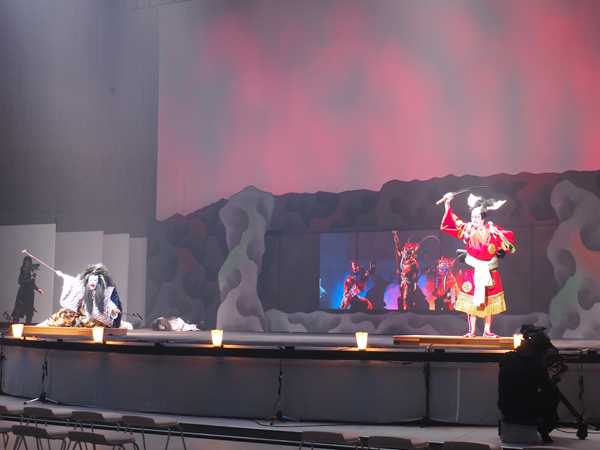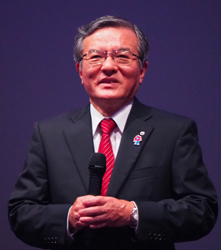“Super Kabuki” at the Expo, Japanese and Taiwanese performers perform together at IOWN NTT Pavilion Day

NTT performed “Super Kabuki <CHO-KABUKI> Powered by IOWN ‘Konjaku Kyoen Senbonzakura Expo 2025ver.'” on the NTT Pavilion Day of the Osaka-Kansai Expo. Connecting Japan and Taiwan through IOWN, Japanese and Taiwanese performers put on a unified performance that made no sense of distance.

島田社長(President Shimada)

AI島田ツイン(AI Shimada Twin)
NTT performed “Super Kabuki <CHO-KABUKI> Powered by IOWN ‘Konjaku Kyoen Senbonzakura Expo 2025ver.'” on the NTT Pavilion Day of the Osaka-Kansai Expo (May 24th and 25th).
Cho Kabuki, which combines Kabuki with cutting-edge ICT, added the traditional Taiwanese art form “Kanshoshu,” and the movements of the performers in Taiwan were transmitted in real time to the Yumeshima venue, creating a performance in which they collaborated with the performers on Yumeshima.
NTT and Taiwan’s Chunghwa Telecom launched the IOWN international APN in August last year, but this was the first use case, successfully creating the world’s first performance of a real-time collaboration across borders.
At a rehearsal held on the morning of the 24th, NTT President Shimada Akira said, “NTT started Cho Kabuki together with Shochiku and Dwango in 2016 to create a new form of kabuki that combined the traditional art of kabuki with cutting-edge technology. Now in its 10th year, I am pleased that Cho Kabuki will be able to present an improved performance at Yumeshima, the site of the World Expo. The Yumeshima and Taiwan venues are connected by IOWN. Using IOWN, the performers will be able to pose as each other from Taiwan to Yumeshima and from Yumeshima to Taiwan. The lighting, sound, and movements of the performers are perfectly coordinated.”
By the way, at the actual performance, Shimada appeared as the “AI Shimada Twin” and addressed the audience.
In addition, by combining cross-modal search technology, which analyzes and quantifies the way the audience waves their penlights in real time, with the IOWN international APN, a performance was created that brought the Japanese and Taiwanese audiences together as one. At the climax, the more the participants waved their penlights, the more the cherry blossoms on the screen bloomed, creating a fantastical atmosphere.
Osaka and Taiwan are about 3,000 kilometers apart. Even the slightest deviation in timing would make a performance at multiple locations unsuccessful. The low-latency IOWN APN solved these issues, enabling a unified performance that disregarded distance.
NTT Executive Vice President Takehiko Kawazoe said, “This success will enable unprecedented productions. IOWN technology made this possible, and as a result, we were able to fuse not only technology but also different cultures into a single work. I am deeply impressed that we are not only spreading technology, but also contributing to bringing harmony and peace to the world.”
Cho Kabuki is also popular in Taiwan, and many fans visit Japan just to see Cho Kabuki. There have also been requests for it to be performed in Taiwan.
Vice President Kawazoe said, “This time we used OWN in the entertainment industry, but OWN also plays a major role in real business. For example, backing up confidential data has become extremely important these days. If it is stored on one site, there is a risk that it will be lost in the event of a disaster. For this reason, data is backed up separately on multiple sites, and the key to this is to instantly synchronize multiple sites and make them the same state. With OWN APN, we can back up data on a bit-by-bit basis”.
※Translating Japanese articles into English with AI
